University Healthcare Report: Digital Technology Limitations
VerifiedAdded on 2020/03/16
|8
|1269
|456
Report
AI Summary
This report critically analyzes the challenges and limitations of digital technology in the healthcare sector. It explores the increasing use of digital tools like mobile health apps, telemedicine, and remote monitoring, highlighting both the benefits and drawbacks. The findings discuss the challenges of integrating new technology, the need for training, and the potential for distractions among healthcare professionals. The report also addresses the importance of Electronic Health Records (EHRs) and the associated risks of data security breaches and privacy violations. It concludes that while healthcare technologies are essential, challenges hinder their optimal implementation and recommends measures like improved communication skills, a dedicated IT team for managing EHRs and data security, and staff training. The report references several academic sources to support its arguments.
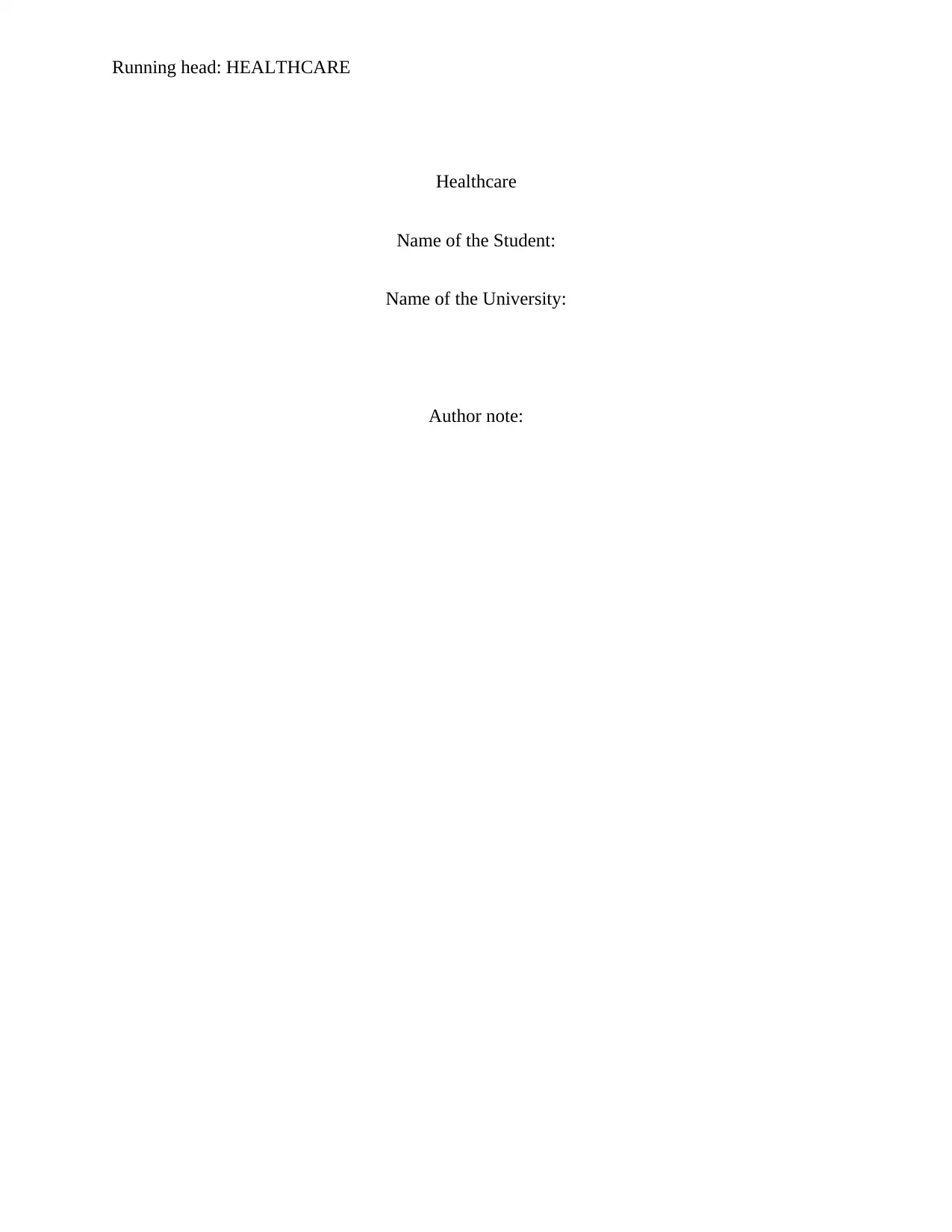
Running head: HEALTHCARE
Healthcare
Name of the Student:
Name of the University:
Author note:
Healthcare
Name of the Student:
Name of the University:
Author note:
Paraphrase This Document
Need a fresh take? Get an instant paraphrase of this document with our AI Paraphraser
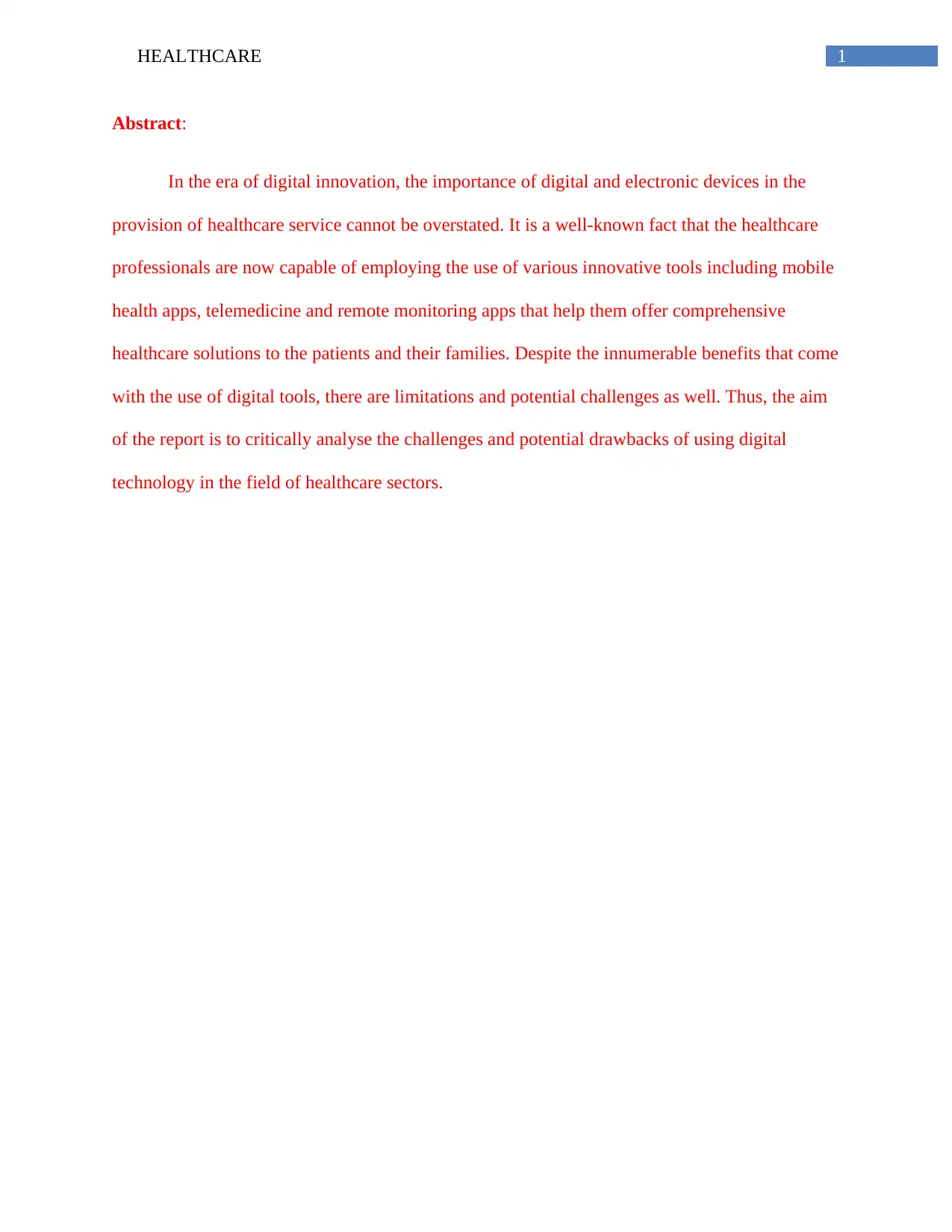
1HEALTHCARE
Abstract:
In the era of digital innovation, the importance of digital and electronic devices in the
provision of healthcare service cannot be overstated. It is a well-known fact that the healthcare
professionals are now capable of employing the use of various innovative tools including mobile
health apps, telemedicine and remote monitoring apps that help them offer comprehensive
healthcare solutions to the patients and their families. Despite the innumerable benefits that come
with the use of digital tools, there are limitations and potential challenges as well. Thus, the aim
of the report is to critically analyse the challenges and potential drawbacks of using digital
technology in the field of healthcare sectors.
Abstract:
In the era of digital innovation, the importance of digital and electronic devices in the
provision of healthcare service cannot be overstated. It is a well-known fact that the healthcare
professionals are now capable of employing the use of various innovative tools including mobile
health apps, telemedicine and remote monitoring apps that help them offer comprehensive
healthcare solutions to the patients and their families. Despite the innumerable benefits that come
with the use of digital tools, there are limitations and potential challenges as well. Thus, the aim
of the report is to critically analyse the challenges and potential drawbacks of using digital
technology in the field of healthcare sectors.
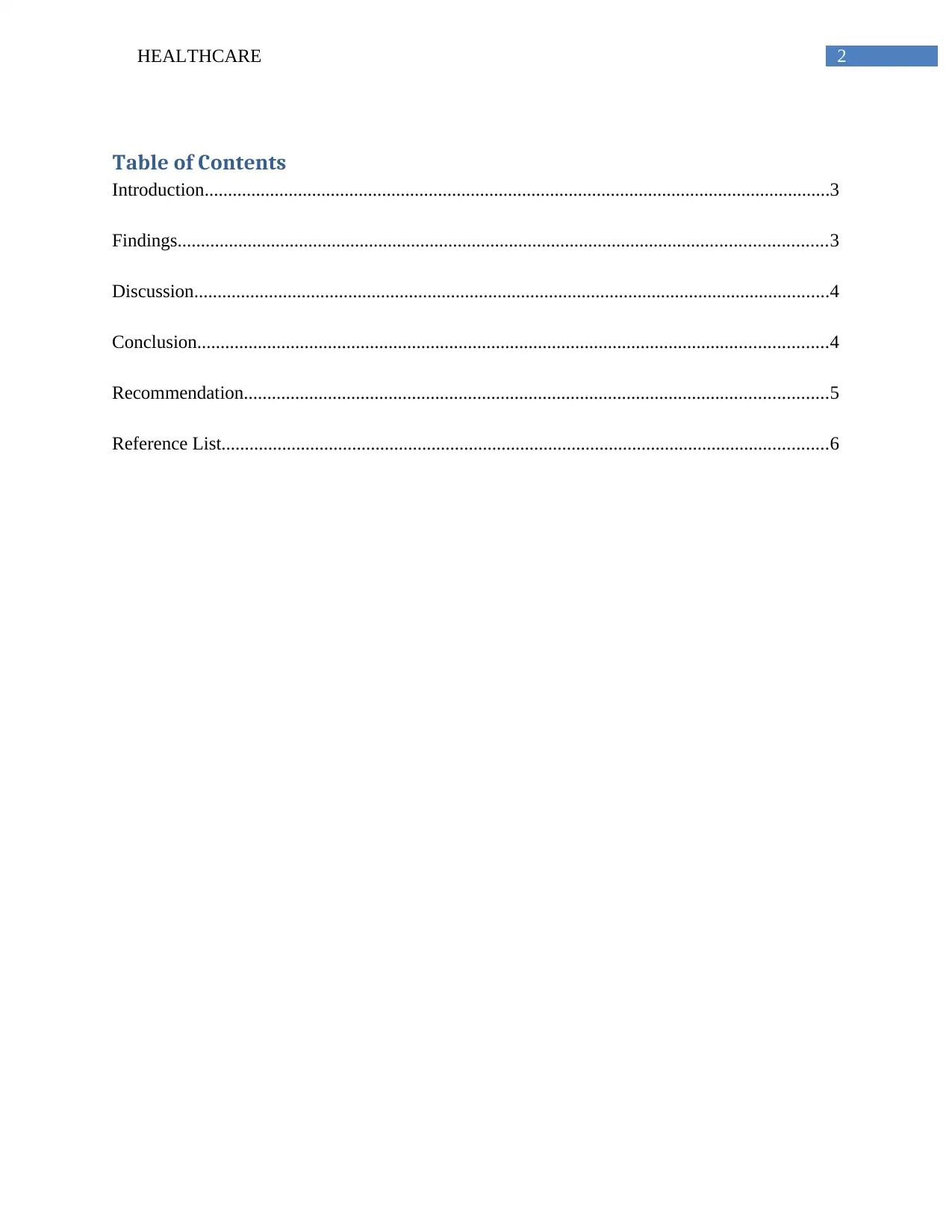
2HEALTHCARE
Table of Contents
Introduction......................................................................................................................................3
Findings...........................................................................................................................................3
Discussion........................................................................................................................................4
Conclusion.......................................................................................................................................4
Recommendation.............................................................................................................................5
Reference List..................................................................................................................................6
Table of Contents
Introduction......................................................................................................................................3
Findings...........................................................................................................................................3
Discussion........................................................................................................................................4
Conclusion.......................................................................................................................................4
Recommendation.............................................................................................................................5
Reference List..................................................................................................................................6
⊘ This is a preview!⊘
Do you want full access?
Subscribe today to unlock all pages.

Trusted by 1+ million students worldwide
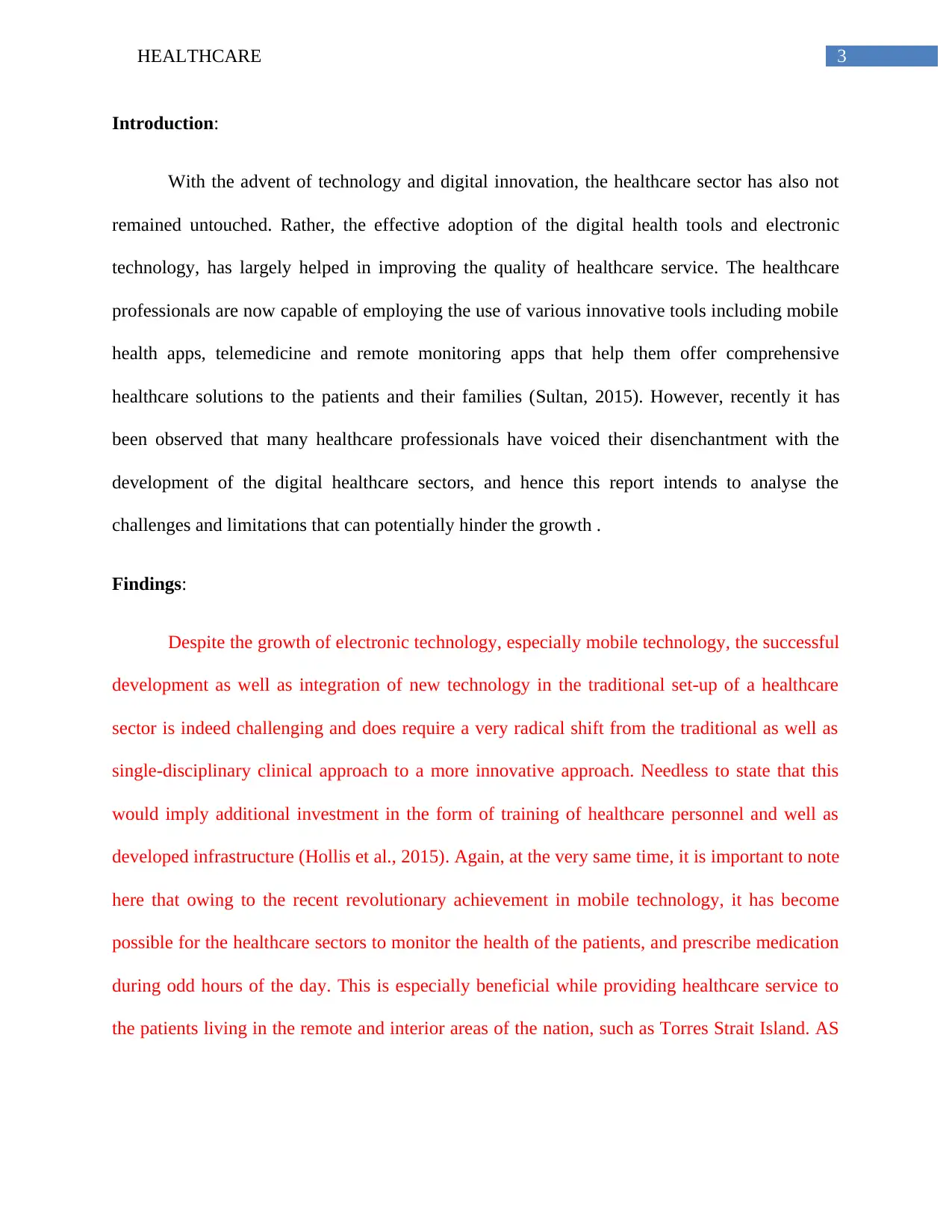
3HEALTHCARE
Introduction:
With the advent of technology and digital innovation, the healthcare sector has also not
remained untouched. Rather, the effective adoption of the digital health tools and electronic
technology, has largely helped in improving the quality of healthcare service. The healthcare
professionals are now capable of employing the use of various innovative tools including mobile
health apps, telemedicine and remote monitoring apps that help them offer comprehensive
healthcare solutions to the patients and their families (Sultan, 2015). However, recently it has
been observed that many healthcare professionals have voiced their disenchantment with the
development of the digital healthcare sectors, and hence this report intends to analyse the
challenges and limitations that can potentially hinder the growth .
Findings:
Despite the growth of electronic technology, especially mobile technology, the successful
development as well as integration of new technology in the traditional set-up of a healthcare
sector is indeed challenging and does require a very radical shift from the traditional as well as
single-disciplinary clinical approach to a more innovative approach. Needless to state that this
would imply additional investment in the form of training of healthcare personnel and well as
developed infrastructure (Hollis et al., 2015). Again, at the very same time, it is important to note
here that owing to the recent revolutionary achievement in mobile technology, it has become
possible for the healthcare sectors to monitor the health of the patients, and prescribe medication
during odd hours of the day. This is especially beneficial while providing healthcare service to
the patients living in the remote and interior areas of the nation, such as Torres Strait Island. AS
Introduction:
With the advent of technology and digital innovation, the healthcare sector has also not
remained untouched. Rather, the effective adoption of the digital health tools and electronic
technology, has largely helped in improving the quality of healthcare service. The healthcare
professionals are now capable of employing the use of various innovative tools including mobile
health apps, telemedicine and remote monitoring apps that help them offer comprehensive
healthcare solutions to the patients and their families (Sultan, 2015). However, recently it has
been observed that many healthcare professionals have voiced their disenchantment with the
development of the digital healthcare sectors, and hence this report intends to analyse the
challenges and limitations that can potentially hinder the growth .
Findings:
Despite the growth of electronic technology, especially mobile technology, the successful
development as well as integration of new technology in the traditional set-up of a healthcare
sector is indeed challenging and does require a very radical shift from the traditional as well as
single-disciplinary clinical approach to a more innovative approach. Needless to state that this
would imply additional investment in the form of training of healthcare personnel and well as
developed infrastructure (Hollis et al., 2015). Again, at the very same time, it is important to note
here that owing to the recent revolutionary achievement in mobile technology, it has become
possible for the healthcare sectors to monitor the health of the patients, and prescribe medication
during odd hours of the day. This is especially beneficial while providing healthcare service to
the patients living in the remote and interior areas of the nation, such as Torres Strait Island. AS
Paraphrase This Document
Need a fresh take? Get an instant paraphrase of this document with our AI Paraphraser
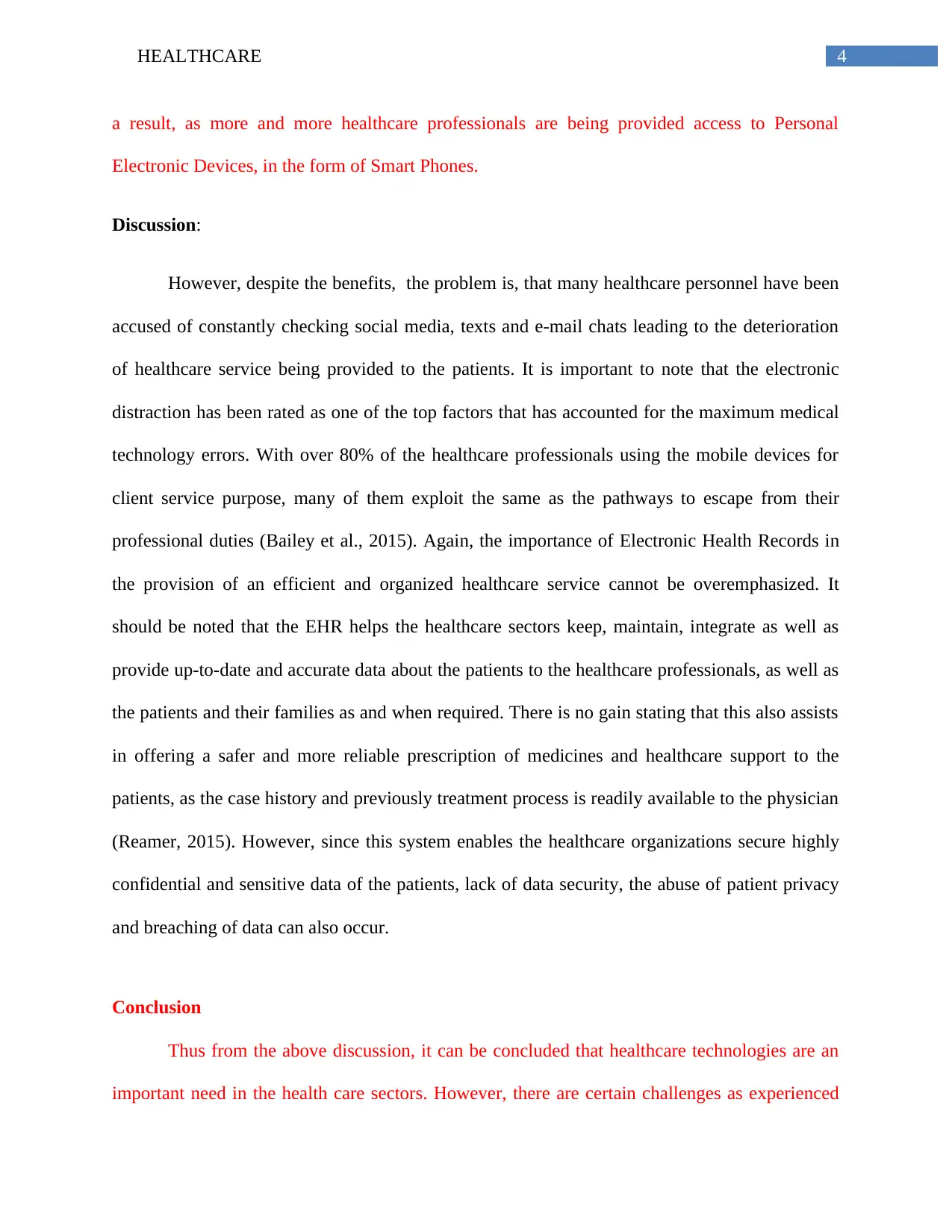
4HEALTHCARE
a result, as more and more healthcare professionals are being provided access to Personal
Electronic Devices, in the form of Smart Phones.
Discussion:
However, despite the benefits, the problem is, that many healthcare personnel have been
accused of constantly checking social media, texts and e-mail chats leading to the deterioration
of healthcare service being provided to the patients. It is important to note that the electronic
distraction has been rated as one of the top factors that has accounted for the maximum medical
technology errors. With over 80% of the healthcare professionals using the mobile devices for
client service purpose, many of them exploit the same as the pathways to escape from their
professional duties (Bailey et al., 2015). Again, the importance of Electronic Health Records in
the provision of an efficient and organized healthcare service cannot be overemphasized. It
should be noted that the EHR helps the healthcare sectors keep, maintain, integrate as well as
provide up-to-date and accurate data about the patients to the healthcare professionals, as well as
the patients and their families as and when required. There is no gain stating that this also assists
in offering a safer and more reliable prescription of medicines and healthcare support to the
patients, as the case history and previously treatment process is readily available to the physician
(Reamer, 2015). However, since this system enables the healthcare organizations secure highly
confidential and sensitive data of the patients, lack of data security, the abuse of patient privacy
and breaching of data can also occur.
Conclusion
Thus from the above discussion, it can be concluded that healthcare technologies are an
important need in the health care sectors. However, there are certain challenges as experienced
a result, as more and more healthcare professionals are being provided access to Personal
Electronic Devices, in the form of Smart Phones.
Discussion:
However, despite the benefits, the problem is, that many healthcare personnel have been
accused of constantly checking social media, texts and e-mail chats leading to the deterioration
of healthcare service being provided to the patients. It is important to note that the electronic
distraction has been rated as one of the top factors that has accounted for the maximum medical
technology errors. With over 80% of the healthcare professionals using the mobile devices for
client service purpose, many of them exploit the same as the pathways to escape from their
professional duties (Bailey et al., 2015). Again, the importance of Electronic Health Records in
the provision of an efficient and organized healthcare service cannot be overemphasized. It
should be noted that the EHR helps the healthcare sectors keep, maintain, integrate as well as
provide up-to-date and accurate data about the patients to the healthcare professionals, as well as
the patients and their families as and when required. There is no gain stating that this also assists
in offering a safer and more reliable prescription of medicines and healthcare support to the
patients, as the case history and previously treatment process is readily available to the physician
(Reamer, 2015). However, since this system enables the healthcare organizations secure highly
confidential and sensitive data of the patients, lack of data security, the abuse of patient privacy
and breaching of data can also occur.
Conclusion
Thus from the above discussion, it can be concluded that healthcare technologies are an
important need in the health care sectors. However, there are certain challenges as experienced
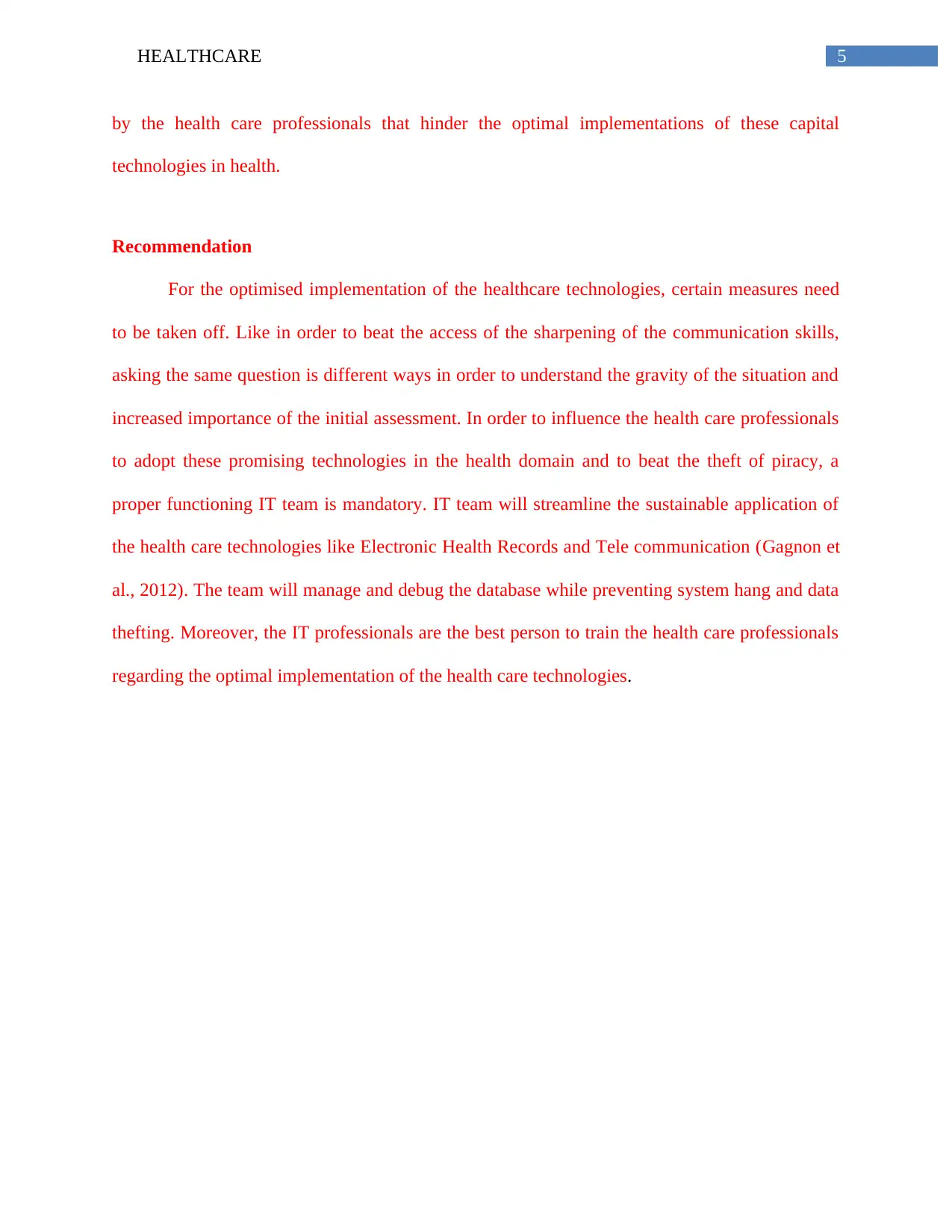
5HEALTHCARE
by the health care professionals that hinder the optimal implementations of these capital
technologies in health.
Recommendation
For the optimised implementation of the healthcare technologies, certain measures need
to be taken off. Like in order to beat the access of the sharpening of the communication skills,
asking the same question is different ways in order to understand the gravity of the situation and
increased importance of the initial assessment. In order to influence the health care professionals
to adopt these promising technologies in the health domain and to beat the theft of piracy, a
proper functioning IT team is mandatory. IT team will streamline the sustainable application of
the health care technologies like Electronic Health Records and Tele communication (Gagnon et
al., 2012). The team will manage and debug the database while preventing system hang and data
thefting. Moreover, the IT professionals are the best person to train the health care professionals
regarding the optimal implementation of the health care technologies.
by the health care professionals that hinder the optimal implementations of these capital
technologies in health.
Recommendation
For the optimised implementation of the healthcare technologies, certain measures need
to be taken off. Like in order to beat the access of the sharpening of the communication skills,
asking the same question is different ways in order to understand the gravity of the situation and
increased importance of the initial assessment. In order to influence the health care professionals
to adopt these promising technologies in the health domain and to beat the theft of piracy, a
proper functioning IT team is mandatory. IT team will streamline the sustainable application of
the health care technologies like Electronic Health Records and Tele communication (Gagnon et
al., 2012). The team will manage and debug the database while preventing system hang and data
thefting. Moreover, the IT professionals are the best person to train the health care professionals
regarding the optimal implementation of the health care technologies.
⊘ This is a preview!⊘
Do you want full access?
Subscribe today to unlock all pages.

Trusted by 1+ million students worldwide
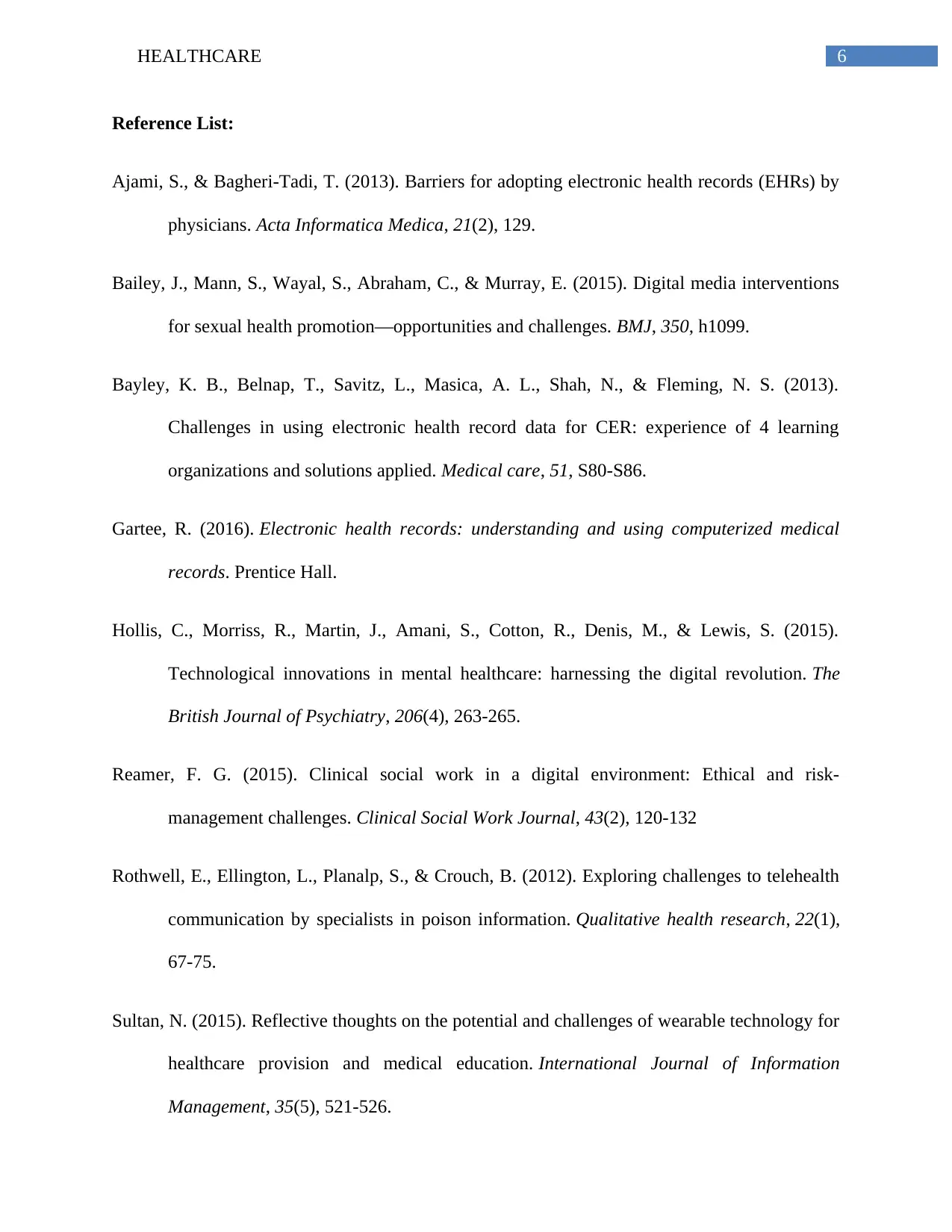
6HEALTHCARE
Reference List:
Ajami, S., & Bagheri-Tadi, T. (2013). Barriers for adopting electronic health records (EHRs) by
physicians. Acta Informatica Medica, 21(2), 129.
Bailey, J., Mann, S., Wayal, S., Abraham, C., & Murray, E. (2015). Digital media interventions
for sexual health promotion—opportunities and challenges. BMJ, 350, h1099.
Bayley, K. B., Belnap, T., Savitz, L., Masica, A. L., Shah, N., & Fleming, N. S. (2013).
Challenges in using electronic health record data for CER: experience of 4 learning
organizations and solutions applied. Medical care, 51, S80-S86.
Gartee, R. (2016). Electronic health records: understanding and using computerized medical
records. Prentice Hall.
Hollis, C., Morriss, R., Martin, J., Amani, S., Cotton, R., Denis, M., & Lewis, S. (2015).
Technological innovations in mental healthcare: harnessing the digital revolution. The
British Journal of Psychiatry, 206(4), 263-265.
Reamer, F. G. (2015). Clinical social work in a digital environment: Ethical and risk-
management challenges. Clinical Social Work Journal, 43(2), 120-132
Rothwell, E., Ellington, L., Planalp, S., & Crouch, B. (2012). Exploring challenges to telehealth
communication by specialists in poison information. Qualitative health research, 22(1),
67-75.
Sultan, N. (2015). Reflective thoughts on the potential and challenges of wearable technology for
healthcare provision and medical education. International Journal of Information
Management, 35(5), 521-526.
Reference List:
Ajami, S., & Bagheri-Tadi, T. (2013). Barriers for adopting electronic health records (EHRs) by
physicians. Acta Informatica Medica, 21(2), 129.
Bailey, J., Mann, S., Wayal, S., Abraham, C., & Murray, E. (2015). Digital media interventions
for sexual health promotion—opportunities and challenges. BMJ, 350, h1099.
Bayley, K. B., Belnap, T., Savitz, L., Masica, A. L., Shah, N., & Fleming, N. S. (2013).
Challenges in using electronic health record data for CER: experience of 4 learning
organizations and solutions applied. Medical care, 51, S80-S86.
Gartee, R. (2016). Electronic health records: understanding and using computerized medical
records. Prentice Hall.
Hollis, C., Morriss, R., Martin, J., Amani, S., Cotton, R., Denis, M., & Lewis, S. (2015).
Technological innovations in mental healthcare: harnessing the digital revolution. The
British Journal of Psychiatry, 206(4), 263-265.
Reamer, F. G. (2015). Clinical social work in a digital environment: Ethical and risk-
management challenges. Clinical Social Work Journal, 43(2), 120-132
Rothwell, E., Ellington, L., Planalp, S., & Crouch, B. (2012). Exploring challenges to telehealth
communication by specialists in poison information. Qualitative health research, 22(1),
67-75.
Sultan, N. (2015). Reflective thoughts on the potential and challenges of wearable technology for
healthcare provision and medical education. International Journal of Information
Management, 35(5), 521-526.
Paraphrase This Document
Need a fresh take? Get an instant paraphrase of this document with our AI Paraphraser
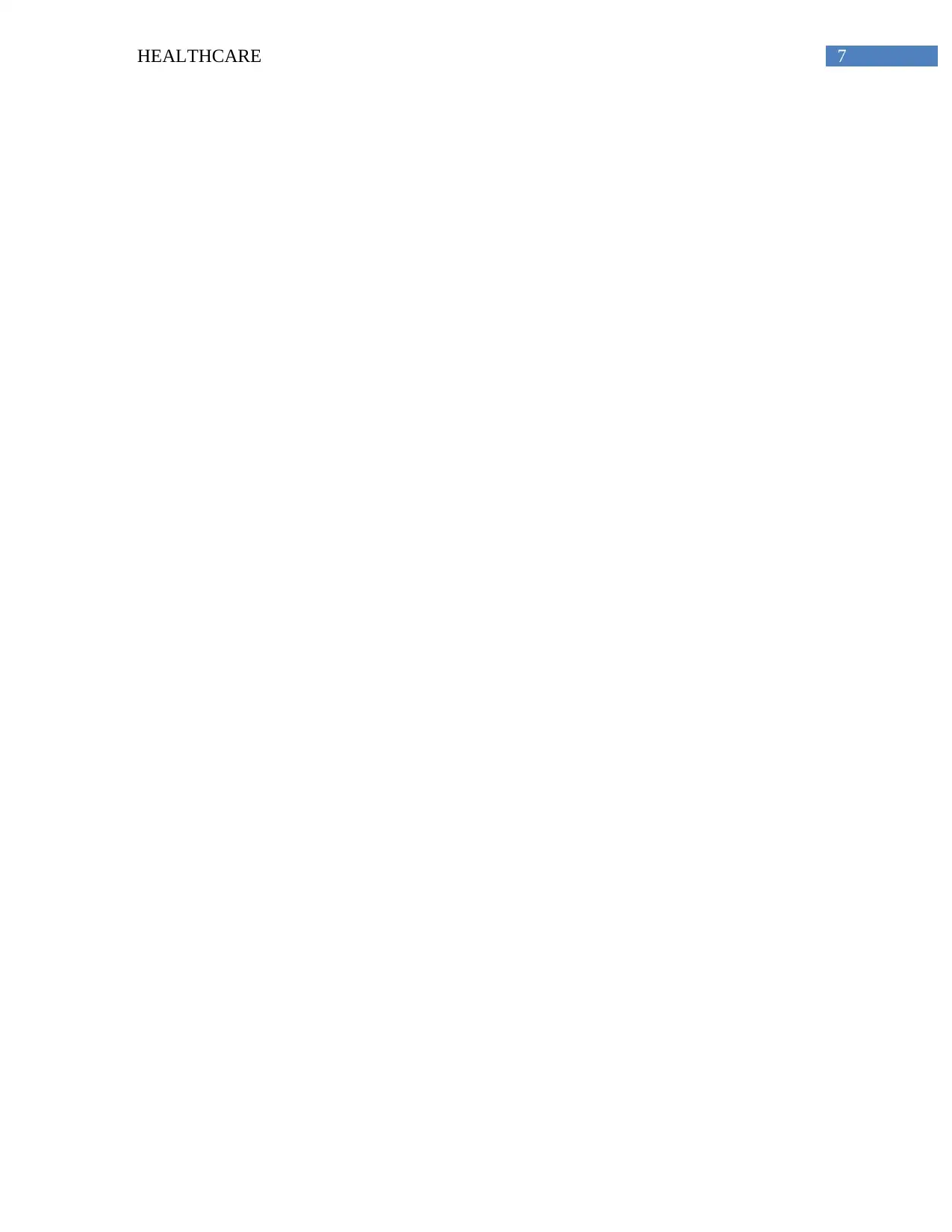
7HEALTHCARE
1 out of 8
Related Documents
Your All-in-One AI-Powered Toolkit for Academic Success.
+13062052269
info@desklib.com
Available 24*7 on WhatsApp / Email
![[object Object]](/_next/static/media/star-bottom.7253800d.svg)
Unlock your academic potential
Copyright © 2020–2025 A2Z Services. All Rights Reserved. Developed and managed by ZUCOL.





